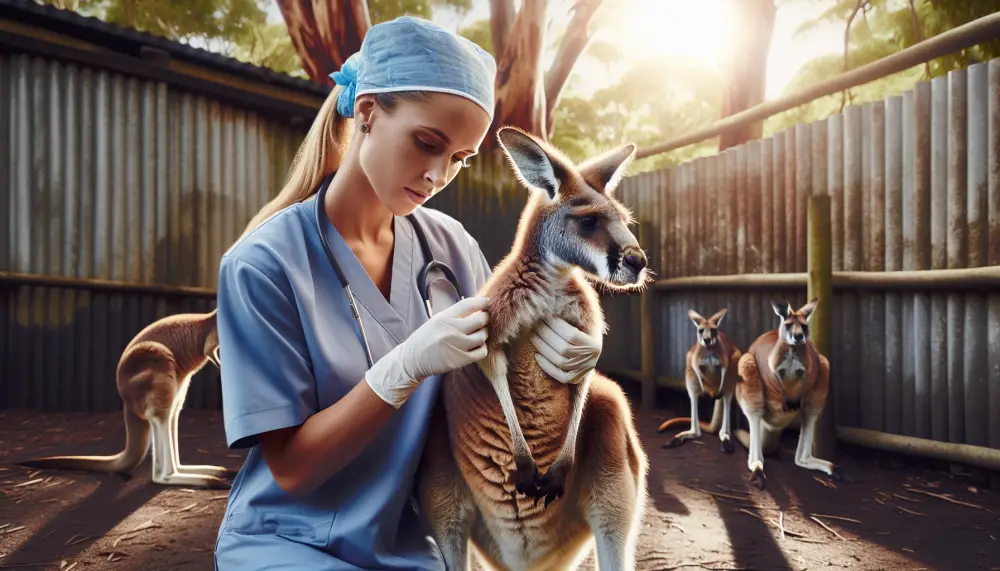Steps to Becoming a Veterinarian in Australia

How to Become a Veterinarian in Australia
Becoming a veterinarian (vet) in Australia requires completing an accredited degree, obtaining professional registration, and, for international candidates, meeting visa and qualification recognition requirements. Below is a step-by-step guide on how to pursue a veterinary career in Australia.
1. Complete an Accredited Veterinary Degree
To become a vet in Australia, you must complete an accredited veterinary science or veterinary medicine degree from an Australasian Veterinary Boards Council (AVBC)-approved university.
Veterinary Courses in Australia
Here are some universities offering accredited veterinary programs:
Undergraduate Pathway (5-6 years)
- Bachelor of Veterinary Science (BVSc)
- Bachelor of Veterinary Biology / Doctor of Veterinary Medicine (BVB/DVM) (Combined program)
Graduate Entry Pathway (4 years)
- Doctor of Veterinary Medicine (DVM) – For those who have completed a relevant bachelor’s degree (e.g., in Animal Science, Biomedical Science, or Biology).
Accredited Universities Offering Veterinary Programs:
- University of Sydney – Doctor of Veterinary Medicine (DVM)
- University of Melbourne – Doctor of Veterinary Medicine (DVM)
- University of Queensland – Bachelor of Veterinary Science (Honours)
- Murdoch University – Bachelor of Veterinary Medicine and Surgery
- Charles Sturt University – Bachelor of Veterinary Biology / Bachelor of Veterinary Science
- James Cook University – Bachelor of Veterinary Science
To find suitable veterinary courses in Australia, visit MyCourseFinder.com, where you can compare entry requirements, tuition fees, and application deadlines.
2. Meet Entry Requirements (For Aspiring Students)
For High School Students (Undergraduate Entry)
- Completion of Year 12 (or equivalent) with strong marks in Biology, Chemistry, and Mathematics.
- A competitive ATAR or equivalent (varies by university).
- Some programs require interviews, UCAT (University Clinical Aptitude Test), or personal statements.
For Graduate Entry (DVM)
- A bachelor’s degree in a relevant field (Animal Science, Biomedical Science, etc.).
- Some universities require prerequisite subjects in Biology, Chemistry, and Statistics.
- Graduate applicants may need to submit GPA scores, interviews, or additional assessments.
English Language Requirements (For International Students)
- IELTS: Minimum overall score of 7.0 (with no band below 7.0).
- TOEFL or PTE Academic scores may also be accepted.
- International students must apply for a Subclass 500 Student Visa to study in Australia.
3. Obtain Registration as a Veterinarian in Australia
After completing an AVBC-accredited veterinary degree, you must register with the veterinary board in your state or territory before you can legally practice.
State & Territory Veterinary Registration Boards
- NSW – Veterinary Practitioners Board of NSW
- VIC – Veterinary Practitioners Registration Board of Victoria
- QLD – Veterinary Surgeons Board of Queensland
- WA – Veterinary Surgeons’ Board of Western Australia
- SA – Veterinary Surgeons Board of South Australia
- TAS – Veterinary Board of Tasmania
Registration typically requires:
- Proof of graduation from an accredited program.
- Completion of application forms and payment of registration fees.
- A criminal background check (varies by state).
- Compliance with Continuing Professional Development (CPD) requirements.
4. Overseas-Qualified Veterinarians – Recognition & Registration
If you have obtained a veterinary degree from outside Australia, your pathway to registration depends on whether your qualifications are recognized:
A. Mutual Recognition (No Exam Required)
If you graduated from a veterinary school in:
- New Zealand, UK, USA, Canada, or South Africa, your degree may be automatically recognized, and you can apply for direct registration.
B. National Veterinary Examination (NVE) Pathway
If your degree is not automatically recognized, you must:
- Pass the NVE Preliminary Examination (multiple-choice theoretical exam).
- Pass the NVE Final Clinical Examination (practical competency assessment).
- Apply for registration with an Australian veterinary board.
For detailed eligibility and exam schedules, visit the Australasian Veterinary Boards Council (AVBC) website.
5. Visa Options for International Veterinarians
If you are an overseas-trained veterinarian and wish to work in Australia, you may need a visa under the Skilled Migration program. Common visa options include:
- Temporary Skill Shortage (TSS) Visa (Subclass 482) – Requires employer sponsorship.
- Skilled Independent Visa (Subclass 189) – Requires nomination based on a points test.
- Employer Nomination Scheme (ENS) Visa (Subclass 186) – Permanent residency pathway through employer sponsorship.
Veterinarians are listed on Australia’s Medium and Long-Term Strategic Skills List (MLTSSL), which means skilled migration opportunities are available.
For visa eligibility and application support, visit MyCourseFinder.com or consult a registered migration agent.
6. Gain Practical Experience & Specialize
Once registered, veterinarians can gain experience and specialize in areas such as:
General Veterinary Practice:
- Small Animal Practice (Dogs, Cats, Exotics)
- Mixed Practice (Farm Animals & Companion Animals)
- Equine (Horses)
Specializations (Postgraduate Training Required):
- Veterinary Surgery
- Internal Medicine
- Dermatology
- Cardiology
- Zoo & Wildlife Medicine
Advanced specialization requires further postgraduate study, internships, and clinical residencies.
7. Career Opportunities in Veterinary Science
Veterinarians in Australia can work in various fields, including:
- Private Practice (Clinics, Hospitals)
- Government & Biosecurity Agencies (Quarantine, Disease Control)
- Veterinary Pharmaceuticals & Research
- Wildlife Conservation & Zoos
- University Teaching & Research
Salaries for veterinarians vary based on location, specialization, and experience. Entry-level veterinarians typically earn $60,000 - $80,000 AUD per year, while specialists and experienced vets can earn $120,000+ AUD per year.
Summary – Becoming a Vet in Australia
- Complete an AVBC-accredited veterinary degree (Undergraduate BVSc or Graduate DVM).
- Register with the relevant state/territory Veterinary Board to practice.
- If overseas-trained, check qualification recognition or complete the National Veterinary Examination (NVE).
- International students require a Subclass 500 Student Visa; working vets may apply for skilled migration visas.
- Gain experience and specialize through clinical practice, internships, and postgraduate training.
For more information on veterinary courses and visa options, visit MyCourseFinder.com to explore study programs and pathways tailored to your needs.










